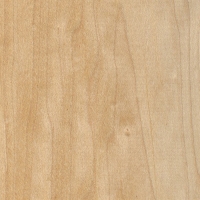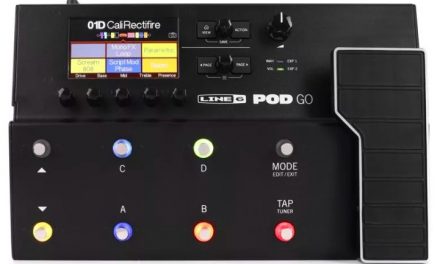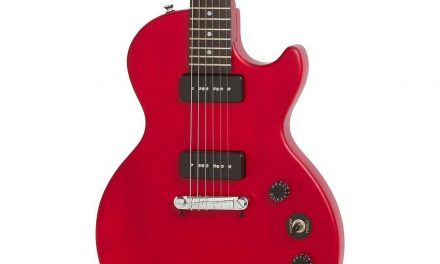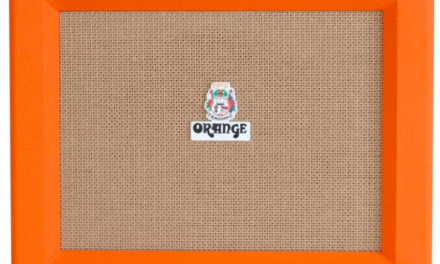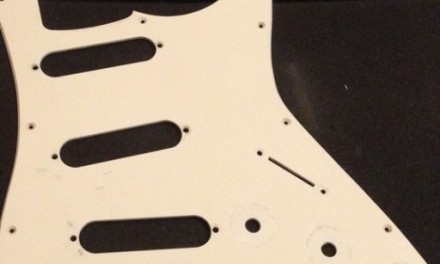At a quick glance, a $399 Epiphone Les Paul looks like a $1,800 Gibson Les Paul. Rob Chapman and Lee Anderton have a great video about this. They talk about the quality of the wood being higher, the nitro vs. poly finish, and a few other things. It’s a good video and you should watch it.
So here at the Budget Guitarist, I like to keep things practical. There are commonly held “collective guitarist beliefs” on the net about this. Some are true, some are not, some are open to debate. In my research on guitar making, I’ve learned a ton. Some people will be bored to tears by this. That’s OK. Most things bore me. But not guitars. Oh my, no. Let’s talk about wood. Huh huh, huh. He said “wood.”
Species and Location
An Epiphone Les Paul and a Gibson Les Paul are made out of mahogany and maple. But you can’t just say “It’s mahogany so it’s the same thing in both guitars.” There are different species of both. Let’s talk about mahogany first. Mahogany is grown all over the place – Mexico, Brazil, Florida, China, New Zealand, Peru, you get the idea. There are three different species of mahogany and there are hybrid blends. The species “swietenia humilis” is useless for guitar making (and not much good for anything else.) The climate where the tree is grown matters.
In addition, the quality of the wood itself matters. Wood can have diseases, can be in various stages of decomposition, etc and so on. A rotten stick that’s falling apart can be mahogany. Methods for storing the wood when the tree is cut down can impact the quality of the final guitar. As you’re starting to see, there are tons of variables and there are still more to discuss.
Responsible Forestry
Some companies care about the environment and some couldn’t give a damn. And in some cases you’re going to pay more if they do care. PRS is known for making sure their sources are practicing responsible forestry, meaning they plant trees to replace the ones they cut down in a manner that results in a constant supply of wood for the company and ensuring that future generations will be able to enjoy that wood. This is more costly to the company growing the wood, so they charge guitar makers more money. And boy does PRS pass that cost on to the customer. Some cheap guitar makers in other countries are not so picky about where they get their wood, or the quality of the wood.
Water Content
So now the wood is in the warehouse to be made into a PRS guitar or a Squier Bullet Strat. You can’t just cut down a tree, make a body and neck out of it, and ship it. It’ll bend. Why? Because of the water in the wood, because the wood hasn’t been properly dried and “cured.” Too much water content and the wood will warp and bend. The goal isn’t to remove 100% of the water content, but to get it down to an extremely low percentage. That percentage can vary between guitar makers. And how they remove the moisture can make a difference. Some companies store wood for a long time in climate-controlled environments and also use a “baking” process where they heat the wood up. The care and time that goes into getting the wood ready can impact the stability and sustain/tone of the wood.
Resin
Some woods contain resin, which is basically a liquid secreted by the tree. It is not the same thing as sap. Resin is extracted from plants and wood to put into all kinds of products such as varnishes and adhesives. There’s resin in mahogany. Over time, the resin in wood will crystalize. This will cause the wood to exhibit a brighter tone. This is one of the big reasons that people say that “old wood” sounds best. And it explains why an acoustic guitar can sound better and better as it ages.
Guitar Maker Processing
When a company makes an electric guitar, wood is obviously a big factor, then. Remember that time is money. A company like Gibson or PRS will take the wood they get and lock it away for a while to age before they even think about touching it. Then they’ll dry the wood as discussed above. With the right amount of water content and the right amount of crystallization, they’ll make an instrument that can sustain really well and has a big, rich unamplified tone. You can see how it could be more expensive to go through all that hassle. Some small companies just buy pre-made necks and slap them on a body they make.
There’s one more factor here, and that’s looks. Now we talk about maple. I started researching this and came up with 15 different species of hard maple. And just like with mahogany, some species are better for building guitars than others. Maple can be very hard and stable, so a lot of companies make necks out of it. In a lot of cases, a thin layer of maple is glued to the top of a mahogany body. The common wisdom is that adding maple to a mahogany body makes it sound a little brighter. I believe that to be true, but it’s not a huge night and day difference like some think. But I think the biggest reason guitar makers use maple tops is for the look. Maple that is highly figured (has a natural beautiful pattern) is very pretty, very cool-looking to most people. So naturally the higher the figuring, the more the cost.
Cap vs. Veneer
There are two ways of putting a maple top on a guitar body – you can do a “cap” or you can do a “veneer.” A cap is a thin piece of maple, maybe a quarter inch thick (more or less depending on the company.) A veneer is the same thing, but it’s super thin. Think piece of construction paper thin. You can put on a maple veneer for way, way less money, and it will look just as good from the front. Guitar makers who use a cap will say they do it for tone. How much difference does that make? It’s debatable.
Body Construction
Most guitar bodies are built by gluing pieces of wood together. Some believe that the fewer pieces of wood used, the better the guitar’s tone. Is that true? In my opinion, it has a very small affect on sound. Lots of people want to debate that. Using more pieces of wood is definitely cheaper for the guitar maker because they can waste less wood. Sometimes they’ll use a solid piece of wood as the body, but they’ll cut out chambers in it to make it weigh less, and to change the sound and sustain of the guitar.
Fretboards
Everything I said above is also true of fretboards, except for veneering. Fretboards have to be thick enough to hold a fret. There are different kinds of woods used for fretboards, some of which are now illegal to bring into or out of the country. A fretboard with too much water content can shrink and expand due to the humidity and weather. The dreaded jagged fret ends on cheap guitars attest to this. Almost all guitars leave the factory with decent fret ends. But some companies don’t do a very good job of conditioning the fretboard, so after a while the jagged frets appear. Cough, cough, GIBSON, cough. You can usually file down the jagged ends, though.
Finish
Now we get to the finish on a guitar. Most companies use nitro or poly, meaning nitrocellulose or polyurethane. Nitro is how they did it in the 50’s – you put on a coat, wait, put on another, wait, and so on. Then you buff it up (polish it.) It can look fantastic on things like bursts. Some believe that the finish affects the tone. Mathematically everything on a guitar affects the tone, but many variables have such a small affect you’d never hear it. Does finish affect tone to the point where you can hear it? I do not know. My guess would be no. Poly finishes are cheaper and faster. They require fewer coats. So a guitar with a nitro finish will cost the guitar maker more money. It can definitely look better to do a nitro finish. It may or may not sound different. But it’s definitely a factor in the price.
Conclusion
As you can see, wood can be complicated. The age of the wood, the species, the water content, and the resin can all contribute to the sound of an instrument. The look can contribute to the price. So when someone says “All maple necks are the same,” you will know better.

